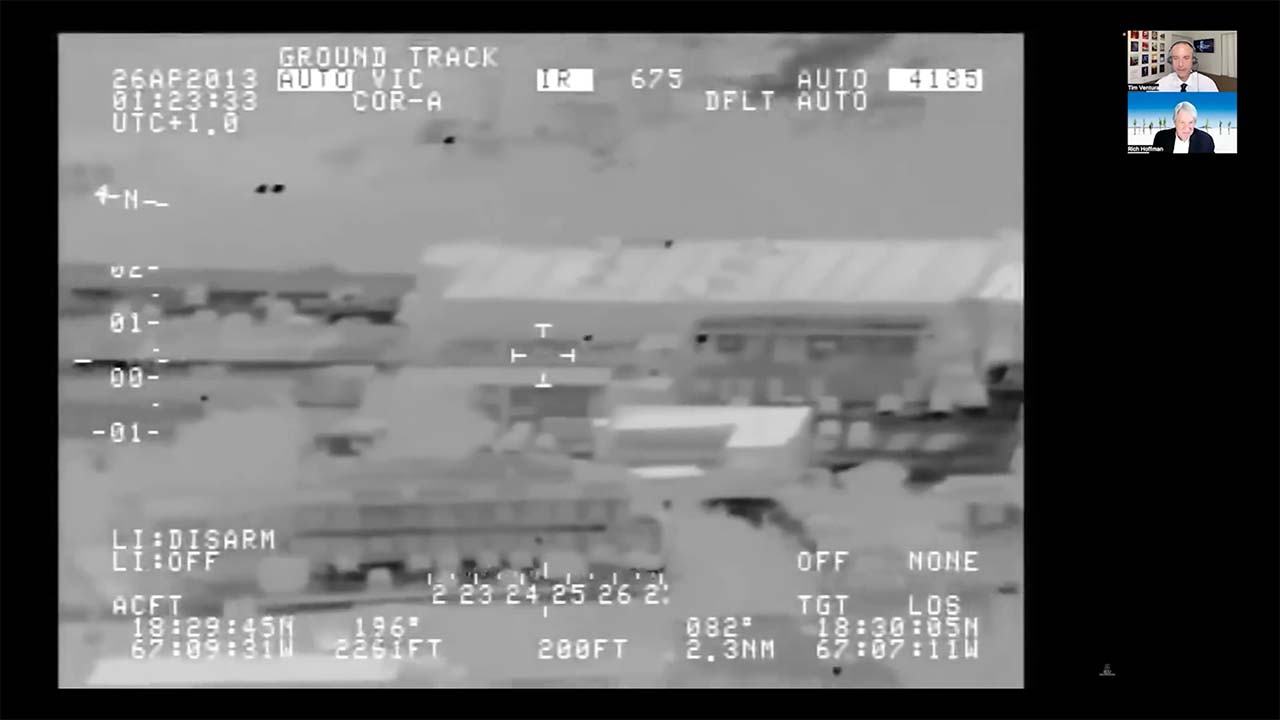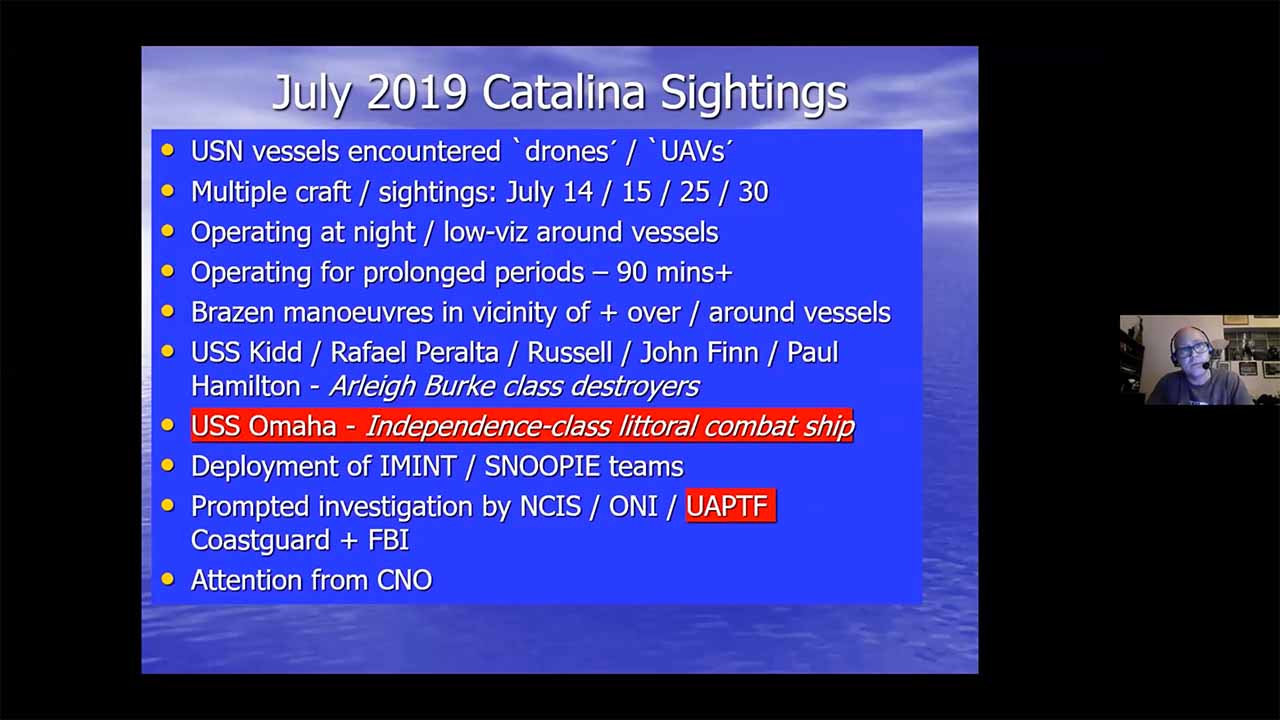UAP Flight Characteristics: The Five Observables
Dr. Kevin Knuth discusses the physics & flight characteristics of UAP phenomena and explores the “5 observables of UAPs“, which are Positive lift, Sudden Acceleration, Hypersonic Velocity without Signatures, Trans-Medium Travel, and Low Observability. Knuth discusses specific UAP encounters, analyzing their extraordinary flight characteristics, such as the Nimitz encounter’s calculated 5,000+ G acceleration and the Aguadillo incident’s underwater transit.
The discussion also covers the challenges of UAP identification, including misidentification, the limitations of current detection technologies (like the Galileo Project’s potential shortcoming in detecting longwave IR signatures), and the possibility of diverse UAP technologies, potentially involving plasma sheaths, warp drives, and manipulation of spacetime. The speakers highlight the need for rigorous data analysis and authentication of existing imagery, emphasizing the importance of corroborating pilot eyewitness accounts with available physical evidence. The episode concludes by suggesting that UAPs may not be a homogenous group, and their behavior points towards technologies far beyond our current understanding.
Five Key Observables: Deconstructing UAP Flight
The discussion centers around five key observables consistently reported in credible UAP sightings, forming the bedrock of scientific inquiry:
- Positive Lift: UAPs demonstrate prolonged hovering capabilities, defying conventional aerodynamic principles. Examples include the Aguadilla, Puerto Rico (2013) incident and prolonged hovering events over Washington D.C. (1952) and Lake Heath, England (1956), where pursuing jets ran out of fuel. Crucially, these events lack any visible heat or exhaust signatures.
- Sudden/Instantaneous Acceleration: This is perhaps the most mind-bending observable. UAPs exhibit accelerations far exceeding the capabilities of any known human technology. The USS Princeton encounter (2004 Nimitz incident) provides a compelling example: an object moved from 28,000 ft to 50 ft above sea level in a mere 0.78 seconds, implying an acceleration exceeding 5,000 Gs. Even at a fraction of this acceleration, speeds approaching 80% the speed of light are achievable within hours. This extreme acceleration is a key reason why many researchers consider these objects to be spacecraft.
- Hypersonic Velocity Without Signatures: UAPs achieve hypersonic speeds without the telltale heat signatures associated with conventional hypersonic flight. This lack of observable energy dissipation is a major puzzle. The Tic Tac UAP, for instance, reached speeds comparable to the New Horizons probe, with acceleration achieved in less than 0.3 seconds. Historical radar observations, such as those by Herman Oberth in 1954, corroborate these extreme speeds.
- Trans-Medium Travel: UAPs seamlessly transition between different mediums – air, water, and potentially even solid objects – without significant speed reduction. The Aguadillo Point case illustrates this, with a UAP entering the water at approximately 110 mph and continuing underwater at around 85 mph. This raises questions about the nature of these objects and their interaction with various environments.
- Low Observability: UAPs often evade detection by conventional means, exhibiting low radar cross-sections and sometimes remaining visually undetectable despite radar contact (e.g., the USS Roosevelt case). This low observability further complicates attempts at identification and analysis.
Beyond the Observables: Unraveling the Physics
The podcast explores several hypotheses to explain these extraordinary capabilities:
- General Relativity or Anti-Gravity: While an anti-gravity explanation predicts a hotter underside (blue shift), the observed cold temperatures of some UAPs contradict this. However, a strong blue shift could potentially explain reported radiation burns.
- Warp Drive: The shape of some UAPs bears a striking resemblance to theoretical warp drive models, suggesting the possibility of advanced propulsion systems.
- Plasma Propulsion: Analysis of images, including those from Ray Stanford (despite the controversy surrounding his work), suggests the presence of plasma sheaths or beams, potentially indicating a novel form of hypersonic propulsion.
- Electromagnetic Effects: UAPs have been reported to generate strong electromagnetic fields, affecting electronic equipment.
Challenges and Future Directions
The lack of independently vetted high-quality imagery remains a significant hurdle. However, the value of existing videos and eyewitness accounts lies in their corroboration of pilot testimony, providing crucial context for the analysis of these anomalous events. The podcast highlights the need for rigorous scientific investigation, emphasizing the importance of data analysis, multi-sensor observations, and the development of new detection technologies. The discussion also underscores the potential diversity of UAPs, suggesting that a single explanation may not suffice.
Conclusion:
The physics of UAPs remains a mystery, but the scientific community is actively working to unravel it. By focusing on rigorous data analysis and open-minded investigation, we can move beyond speculation and towards a deeper understanding of these enigmatic phenomena. The journey is far from over, but the insights shared in this podcast offer a compelling glimpse into the fascinating world of UAP physics.
Register For UFORev
Want to see more great UFO Reverse Engineering stories? Sign up for our mailing list to get exclusive access to captivating presentations, engaging events, and more!
RECENT POSTS
Congressional UFO Hearing with Lue Elizondo
May 4, 2025
Congressional UFO Hearing with David Grusch
May 3, 2025
The Long History of UFO Crash Retrieval
May 2, 2025
Aguadilla UAP Sighting Analysis
May 2, 2025
The Catalina UAP Sightings
May 2, 2025





